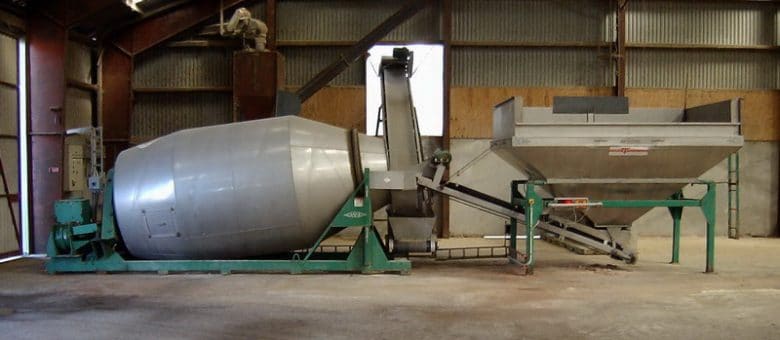Pre-plant blended fertilizers and nitrogen topdressing for maize
Summary
For maize to achieve high grain yields there is need of applying the right fertilizers at the right rate and at the right time following best agronomic practices. Shortages of nutrients like nitrogen (N), phosphorus (P) and potassium (K) result in a weaker root system, crop stunting, disease vulnerability, low photosynthetic activity and efficiency, fewer numbers of cobs and kernel row, and incomplete grain filling. Many farmers in Sub-Saharan Africa do not use appropriate formulations, dosages and schedules of mineral fertilizer input which causes unsatisfactory grain yields, low profitability and undesired losses to the environment. Specialty mixes of common fertilizers that contain N, P, K and other nutrients like sulfur have been developed for basal application to maize crops at planting that create balanced availability of nutrients. N fertilizer inputs represent one of the largest investments for maize farmers, and get severely undermined by drought or excessive rainfall that occur ever more frequently in SSA. It is widely recommended that N fertilizers are applied in two splits, with a top-dress later in the growing season. This practice ensures adequate supply of N for crops throughout the growth cycle and mitigates financial risks for farmers.
About the Solution
Use of “single” fertilizers with N, P, K and other nutrients causes farmers to apply suboptimal and inconsistent balances that undermine the uptake and production gain of maize crops, and give rise to unsatisfactory returns on investments. Blended fertilizers are easy to make by mixing two or more single fertilizers using carefully measured formulas that address nutrient deficiencies, ensure no wastage and reduce costs of application to croplands. Agro-input suppliers and manufacturers offer specially designed pre-plant fertilizer blends for maize which promote early crop development, stress resilience and grain production by efficiently supplying nutrients throughout the growing season. Top dressing N fertilizer ensures the availability in soils is well aligned with the demand of maize crops unlike is the case when applying the input all at once. Usually, the optimum time for top dressing N fertilizer is at the stage when maize crops have 8 to 10 fully developed leaves. It is widely demonstrated that African farmers can obtain higher maize yields with lower rates of nutrient inputs when using blended fertilizers at planting instead of single fertilizers, and splitting applications of nitrogen instead of a one-time input (even with slow release products). To maximize efficiency and profitability of pre-plant and top-dress fertilizer application it is necessary to account for residual nutrient stocks in soils and deficiencies in crops through visual inspection of stands.
Pre-plant fertilizers with specialty nutrient blends and split application of nitrogen by topdressing are recommended for maize production in all types of growing areas from SSA, this includes regions with a dry sub-humid or humid climate and soils with a high clay or high sand content. These fertilizer technologies offer particularly large benefits for smallholder farming systems where low amounts of mineral nutrients are applied, and degraded croplands where availabilities in soils are very low and imbalanced. Commercial maize farmers stand to reduce fertilizer spends and enhance profit margins owing to the high levels of fertilizer use efficiency that are achieved by pre-plant fertilizer blends and N top-dressing. The use of balanced fertilization for maize works in conjunction with legume intercropping and rotation since the mineral nutrient inputs also benefit the accompanying crop.
Specific nutrient formulas that fulfil requirements of maize can be made by blending a wide range of solid granular types of fertilizers like urea, calcium ammonium nitrate, potassium chloride, single or triple super phosphate and sulphate. Micronutrients like zinc, boron and cupper, amongst others can be added in solid form or impregnated as liquid. Readily accessible types of fertilizers and manufacturing facilities across Sub-Saharan Africa can be used to prepare appropriate blends of nutrients for maize crops. The rates of nutrients applied by pre-plant fertilizer blends and N top-dressing is based on specific yield targets and recommendations aligned with local conditions.
Formulations of specialty pre-plant blended fertilizers for maize crops are developed on the basis of information about the nutrient deficiency and imbalance in specific growing areas contained within soil maps and past agronomic trials. A dry rotary system available in medium to large sizes is used for mixing single fertilizers that are sourced locally subject to availability. It is best for blended pre-plant fertilizers to be place at the bottom of sowing holes by hand or planting equipment, but they can also be broadcast shortly before or after planting. For N topdressing the most common fertilizers are urea or calcium ammonium nitrate, and there is a recent trend of using supergranules or slow release agents to improve uptake. Applications of the fertilizer on top of soils can be done at the base of maize plants by manual placement and using side dressers, or can also be broadcast by hand or using spinners. Foliar spraying of liquid N fertilizer can also be used which is fast and has very low losses through leaching and volatilization, but is prone to scorch and leaf damage if not properly applied. The timing for applying the second dose of N depends on nutrient availabilities in soils and rainfall conditions, for dry granules this has to be done before a rain event to move the nitrogen into the soil.
Commercialization
Commercially available
Solution Images
Institutions

Accompanying Solutions
Drought tolerant maize varieties (DTMA, WEMA), Imazapyr resistant maize for Striga management (IR), Golden maize varieties (high in provitamin A), Pre-emergence herbicides for weed control


